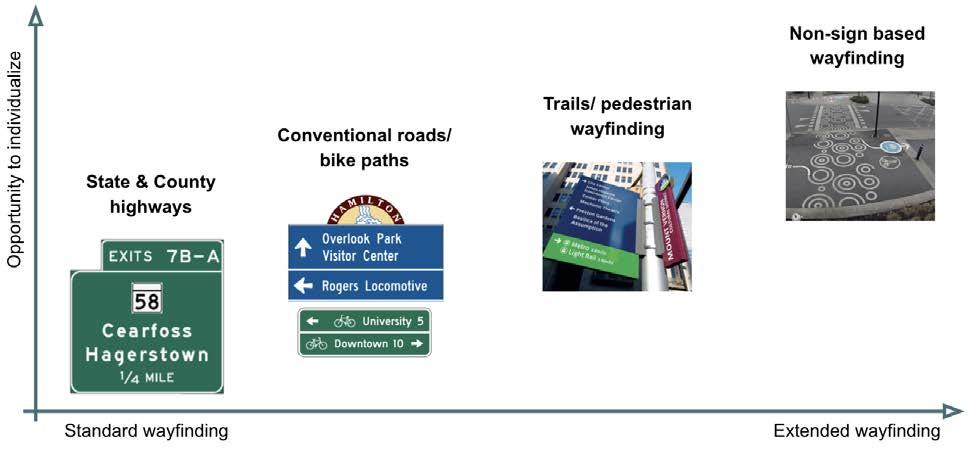
1 minute read
2.3 Wayfinding Types
from Wayfinding Process Manual - November 2021
by The Maryland-National Capital Park and Planning Commission
Wayfinding systems used in the public realm can be divided into three groups: standard, enhanced, and nonsignbased and digital wayfinding. Standard forms of wayfinding include the familiar systems of signs for navigating roadways and paths. These tend to be primarily for guiding people from place to place efficiently. Implementation of these systems is successful when the user complies with wayfinding directions and navigates to their desired destination. Nonstandard wayfinding systems are a broader group that uses custom-designed signs and other tools and clues to enhance a sign’s look and feel and emphasize intuitive navigation. In this manual, this type of wayfinding is called enhanced wayfinding; there is not a commonly accepted industry name for this type of nonstandard wayfinding.
Wayfinding tools include heavily regulated standard traffic signs and individual design solutions
Opportunity to individualize State and County highways
Conventional roads/bike paths Trails/ pedestrian wayfinding Nonsign based wayfinding
Standard wayfinding Enhanced wayfinding
This enhanced wayfinding group adopts the principles that underpin standard wayfinding but applies them creatively according to the character and specific needs of the situation. Enhanced wayfinding projects offer opportunities to individualize design to incorporate brand identity, history, culture, and art, and goes beyond simple traffic signs to meet the specific needs of users like pedestrians and people with disabilities. Enhanced wayfinding is successful when it achieves both navigation and the objectives of the system.
2.3.1 Standard wayfinding
Standard wayfinding serves to:
• Provide directions to destinations ahead of a decision point, allowing road and shared-use users to safely maneuver along the route towards their desired destination. • Reassure road users that they have made the proper turn and understand upcoming navigation.
These address the main navigational questions of “Where am I?”, “Which way do I turn?”, and “Am I still going the right way?”, and provide a standard set of simple tools for guiding someone from place to place.






